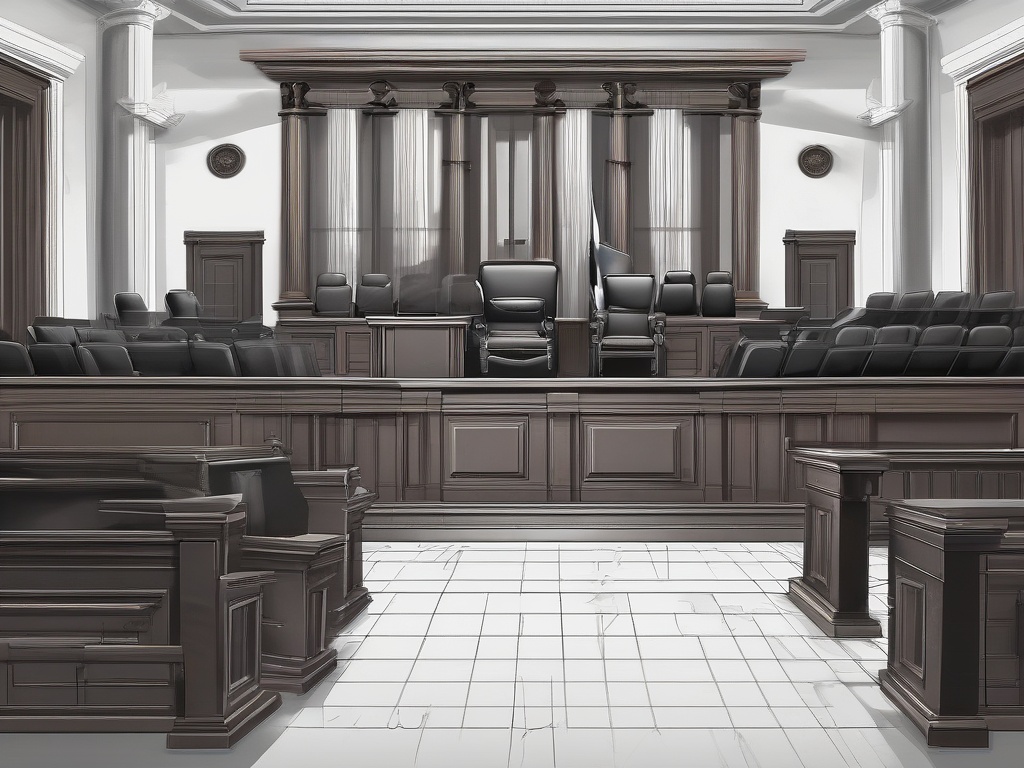Unveiling the Legal Divide: The Stark Contrast Between Misdemeanors and Felonies
In the complex world of criminal law, the distinction between misdemeanors and felonies is not merely a matter of semantics but a fundamental divide that shapes the trajectory of justice, sentencing, and personal freedom. This stark contrast influences everything from the severity of punishment to the long-term implications for defendants, making it crucial for anyone navigating or understanding the legal system to grasp these differences comprehensively.
Many often underestimate the significance of this divide, assuming all crimes are viewed uniformly. However, the legal system meticulously categorizes offenses based on their severity, intent, and societal impact. Recognizing this difference is essential in appreciating how laws are structured and how they serve the purpose of justice within the community.
At the core of this distinction lies the severity and consequences associated with each category. Misdemeanors are typically less serious offenses, such as petty theft, vandalism, or minor assault, which usually result in short-term imprisonment, fines, or community service. These penalties are designed to address minor violations and rehabilitate offenders without disrupting their lives excessively.
In stark contrast, felonies represent the most serious crimes—including murder, rape, kidnapping, and major drug trafficking. Convictions often carry long-term imprisonment, life sentences, or even capital punishment. The legal process for felonies is more rigorous, often involving extended court proceedings, and the repercussions extend beyond punishment, affecting voting rights, employment opportunities, and social standing permanently.
The differences between misdemeanors and felonies extend beyond courtroom penalties, profoundly impacting a person’s future opportunities and reputation. A misdemeanor conviction might result in temporary inconvenience, but it generally does not carry the weight of a criminal record that can hinder employment or housing prospects. Conversely, a felony conviction can be a lifelong barrier, stigmatizing individuals and limiting their integration into society.
Understanding these distinctions is vital for comprehending the justice system’s layered approach to crime and punishment. It underscores why legal professionals, policymakers, and citizens must recognize the importance of categorizing offenses accurately to ensure fair treatment and effective deterrence, thereby maintaining social order and justice.
Penalties and Punishments: How Severity Shapes the Justice of Misdemeanors vs. Felonies
In the realm of criminal justice, the severity of an offense fundamentally influences the nature and extent of its punishment. While misdemeanors often result in relatively light penalties, the repercussions for felonies are designed to reflect their grave societal impact. This distinction underscores the justice system’s nuanced approach to crime, balancing accountability with proportionality.
For misdemeanors, the consequences typically involve short-term incarceration, often less than a year, coupled with fines or community service. These penalties aim to correct behavior without permanently disrupting an individual’s life. The focus remains on rehabilitation and deterrence for minor infractions, acknowledging the lesser threat posed by such crimes.
In stark contrast, felony penalties are markedly more severe, frequently involving long-term imprisonment that can extend to decades or even life sentences. Crimes like homicide or armed robbery carry penalties that serve both retribution and societal protection. The legal framework ensures that the gravity of these offenses is matched with correspondingly substantial punishments, emphasizing the importance of safeguarding community welfare.
The impact of penalties extends well beyond the courtroom, shaping the future prospects and social standing of offenders. A misdemeanor conviction, while potentially embarrassing or inconvenient, often does not result in lifelong consequences, allowing individuals to rebuild their lives with relative ease. Conversely, a felony conviction can be a formidable barrier, stripping away voting rights, limiting employment opportunities, and stigmatizing individuals long after serving their sentences. The difference in penalties thus reflects a broader societal acknowledgment of the varying degrees of threat and culpability associated with these crimes, reinforcing the importance of proportionate justice.
Legal Consequences and Long-Term Impact: Navigating the Aftermath of Misdemeanor and Felony Convictions
Understanding the aftermath of a criminal conviction requires more than just knowing the immediate penalties; it involves recognizing the profound and often life-altering consequences that extend well beyond the courtroom. While a misdemeanor might seem manageable at first glance, and a felony appears as a distant threat, both carry repercussions that can shape an individual’s future in unexpected and enduring ways.
The legal landscape post-conviction is a complex web of restrictions, rights, and societal perceptions. For misdemeanor offenders, the long-term effects are generally less restrictive, primarily involving temporary limitations and opportunities for rehabilitation. However, even these seemingly minor convictions can surface during background checks, affecting employment prospects, housing applications, and eligibility for certain licenses. The stigma attached to any criminal record can create hurdles that require concerted effort to overcome.
In stark contrast, felony convictions cast a shadow that can persist indefinitely. Beyond the obvious legal restrictions—such as loss of voting rights, firearm ownership, and eligibility for government assistance—the social stigma can be equally damaging. Felony records often serve as barriers to stable employment, re-enfranchisement, and community reintegration, making it difficult for ex-offenders to rebuild their lives. The societal perception of felons often results in marginalization, which can hinder access to essential services and perpetuate cycles of recidivism.
For those navigating the aftermath of these convictions, the path to recovery demands resilience and strategic action. Many jurisdictions now offer expungement or record-sealing options, allowing individuals to mitigate some of the long-term impacts of misdemeanor charges. Yet, the process can be complex, often requiring legal assistance and meeting specific criteria. Conversely, felonies often pose more significant barriers, with fewer opportunities for clemency, and in some cases, lifelong restrictions that demand innovative approaches and persistent advocacy for reintegration.
Ultimately, the enduring legal and societal consequences of misdemeanors and felonies underscore the importance of informed decision-making and proactive measures. Both categories of offenses serve as stark reminders of the importance of understanding the broader implications of criminal behavior—not just for justice, but for personal redemption and societal harmony.

